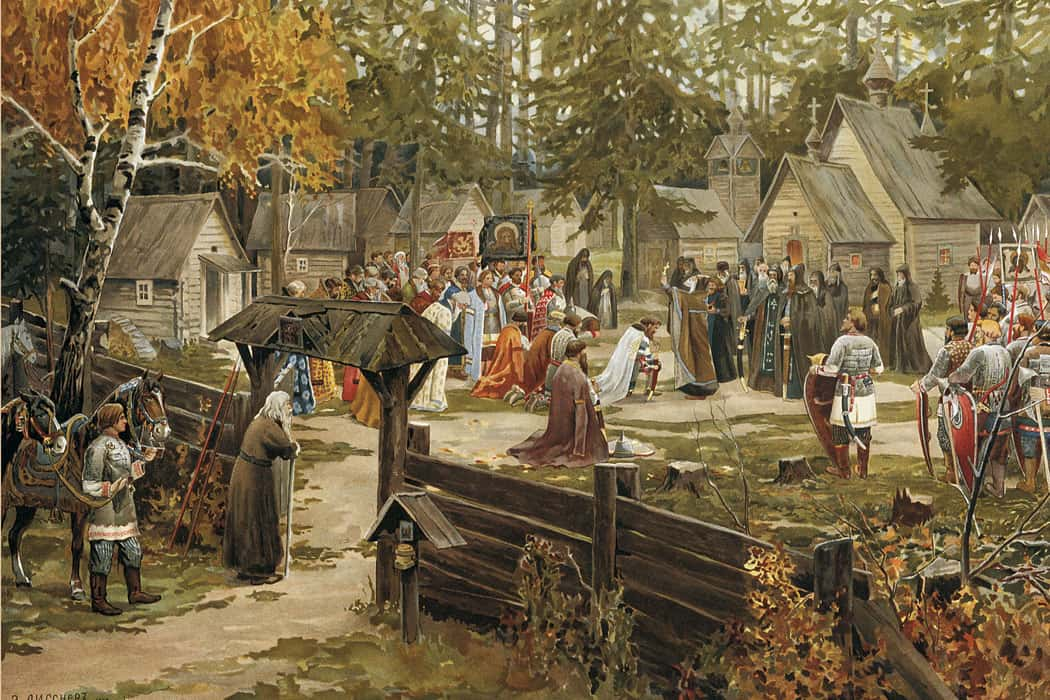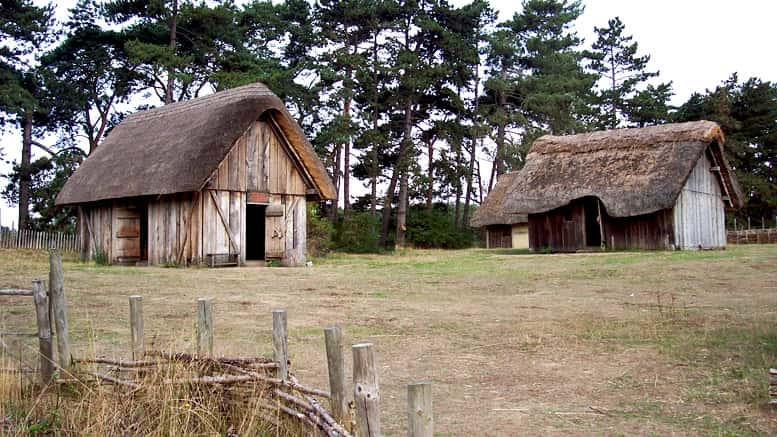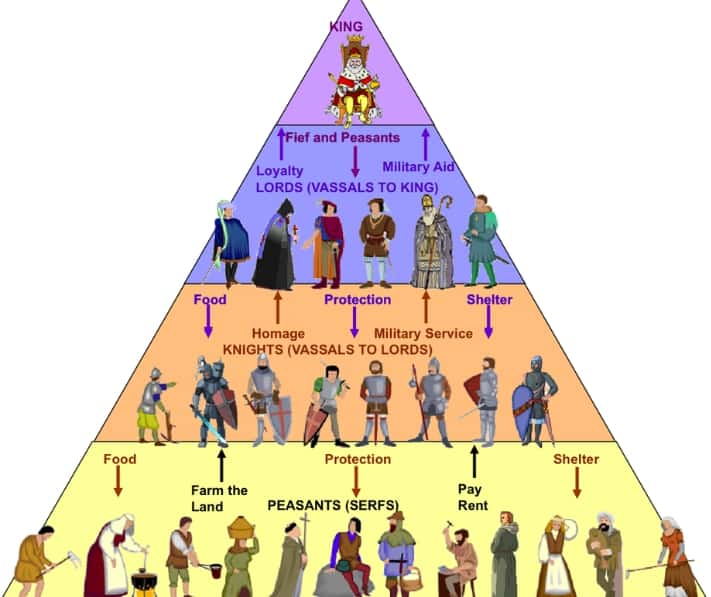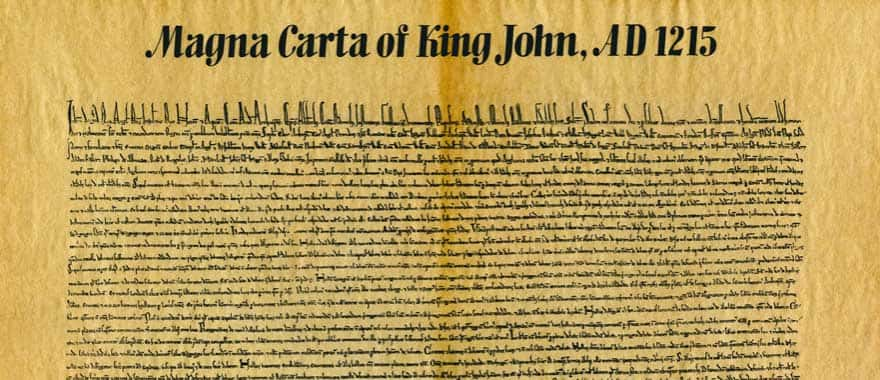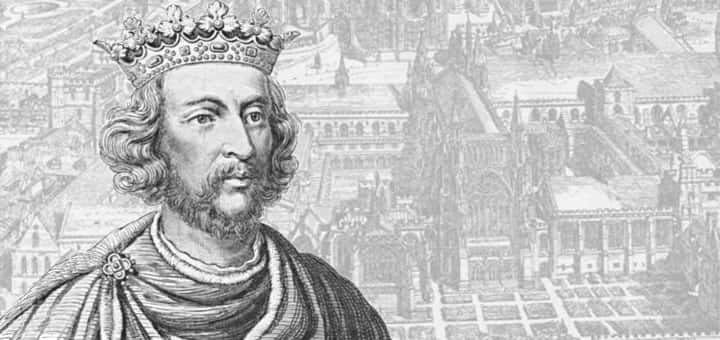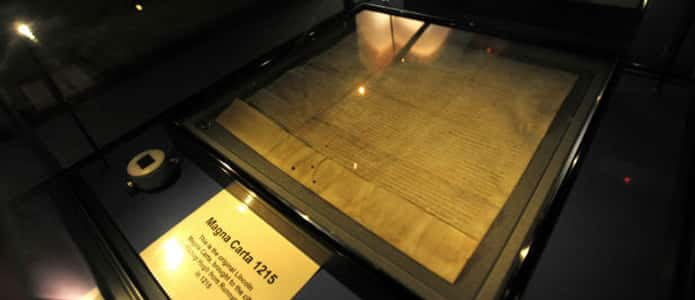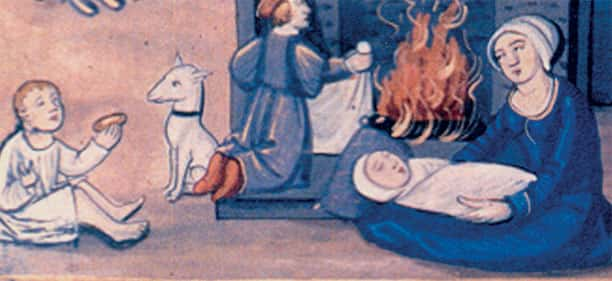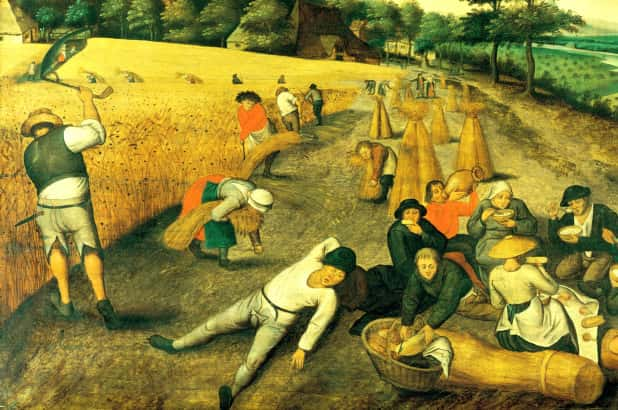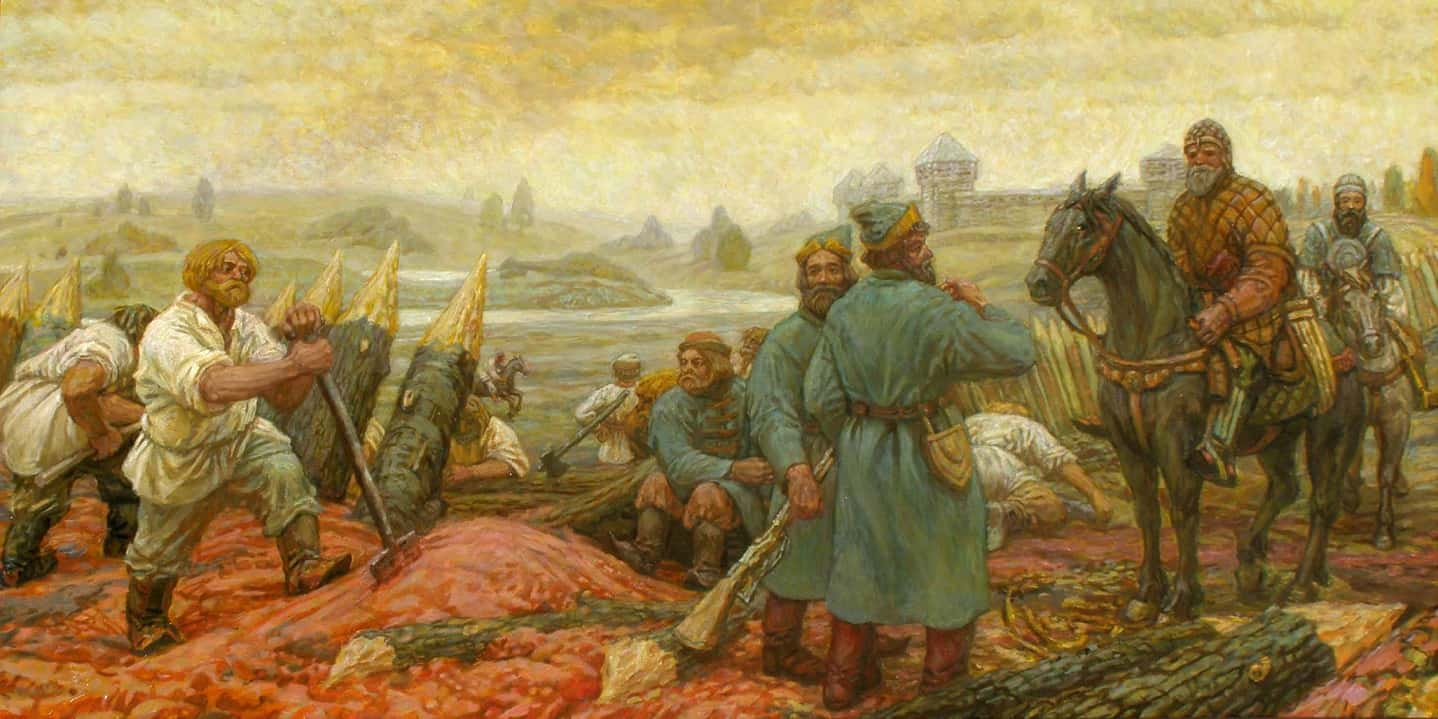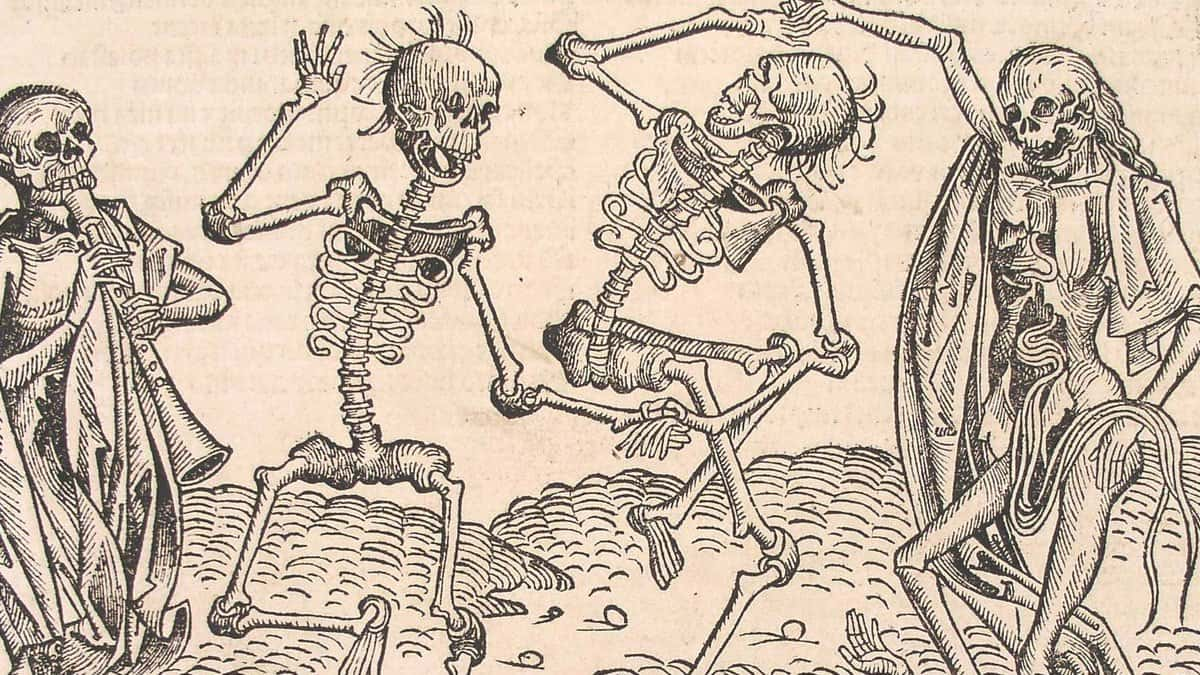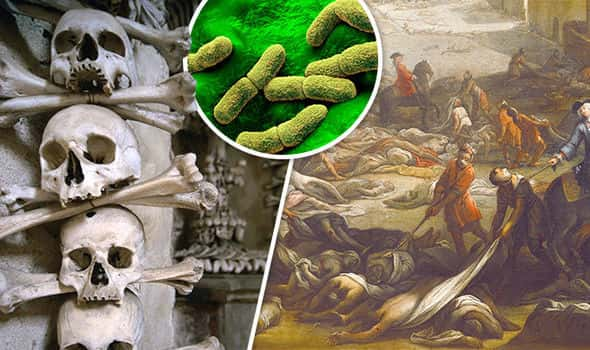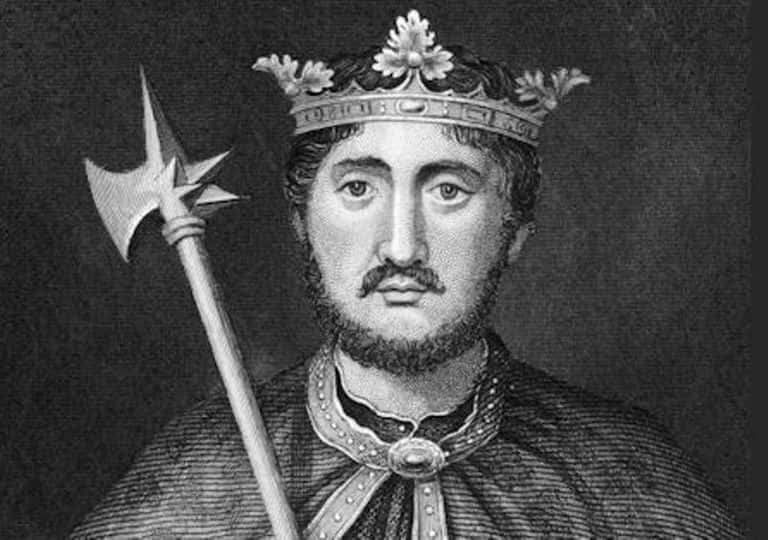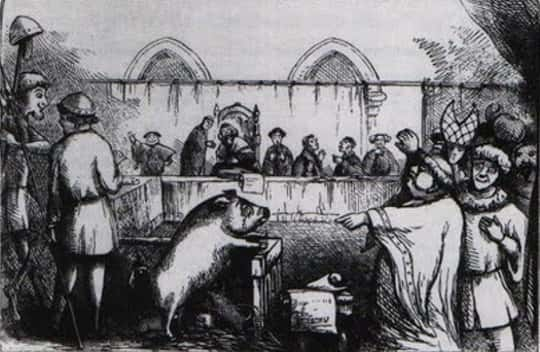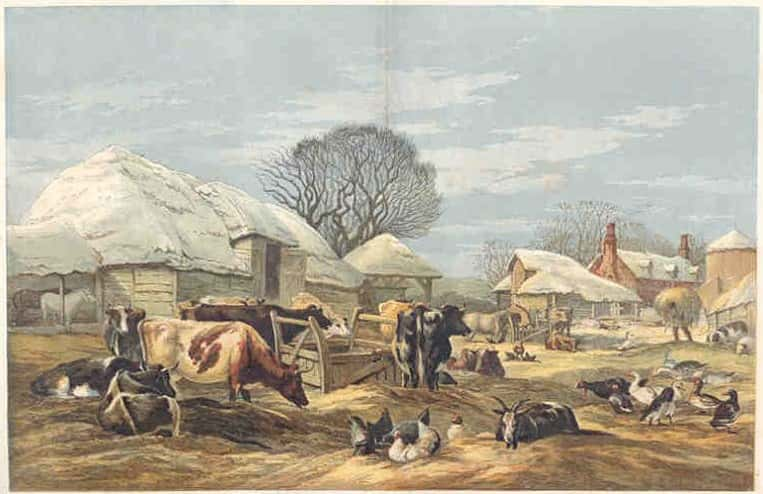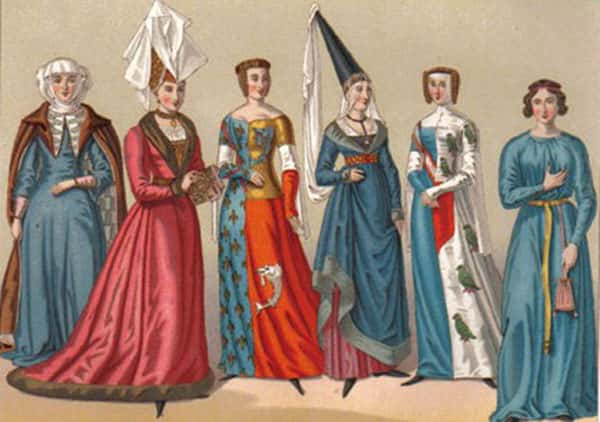For many of us, our mental images of the medieval era are colored heavily by movies, books, and epic tales. We might picture King Arthur and the Knights of the Round Table, riding through the countryside on endless quests. Or, we maybe we think of someone like Robin Hood, gallantly defending the poor and powerless against the rich and cruel.
But while those stories about great halls and chivalry aren't entirely untrue, they don't manage to paint a complete picture of what life was like for the majority of medieval people. And we have to say: now that we've done our research, and delved deep into the culture of Medieval England, it's hard to understand why. It was a fascinating, if occasionally horrific, time. Life could be, as Thomas Hobbes once said, "Nasty, brutish and short"... but the lives of the common people in the middles ages were also dramatic and full of folksy charm. A more realistic portrayal in film might be a little grittier than your typical medieval tale... but it would also be far more interesting.
Hollywood, if you're reading, you know exactly what to do...
Meanwhile, in the interest of filling-out your knowledge of this absolutely incredible period of human history, here are 44 facts about life in England during the dark ages. Enjoy.
44. It Was How Long Ago, Exactly?
When we talk about Medieval times, we're usually referring to the Middle Ages, which lasted for a pretty long time: from about 400 to 1485 AD. Because of the extended time frame, the Middle Ages are generally split into the Early, High and Late periods. In England, the Anglo-Saxon period was in the Early Middle Ages and the Norman conquest took place during High Middle Ages.
43. Establishing a New Life
During the Anglo-Saxon period, shortly after Roman rule in England came to an end, new groups of Germanic people (including the Angles and the Saxons, of course) settled in England. They built wooden buildings to replace the Roman ones and spoke a unique language that helped form English as we know it today. Christianity settled into the British Isles with St. Augustine of Canterbury, the first archbishop of Canterbury, in 597. At this time, many generations of a family all lived together in one home. Farming was the most common occupation, but there were also carpenters, blacksmiths, jewellers, cobblers and potters.
42. There’s a New Ruler in Town
William the Conqueror, from Normandy, in Northern France, took over England after his victory at the Battle of Hastings in 1066. He commissioned the Domesday Book in 1086 during the High Middle Ages to compile a census of his new lands and people. The Normans brought a lot of change to England, introducing the feudal system, castles, as well as establishing Oxford University and the Tower of London.
41. The Original Pyramid Scheme
Under the feudal system, the king took a quarter of the land for himself, gave another quarter to the Church, and split the remaining half among 12 people loyal to him. These 12 loyal men put knights in charge of the farmers who worked the land. A common way to picture the system is with a pyramid: all the peasants are beneath the knights, who are beneath the lords of the land, who are beneath the king himself, who answers only to god.
40. An Ego Too Big for the Door
From 1199 to 1216, King John ruled England, and he's remembered as one of the worst and most oppressive rulers in the history of the country. He introduced heavy taxes on his people and had a major spat with the Pope, leading to his excommunication from the Catholic Church. After many years of his terrible reign, the nation's barons revolted, demanding John follow the Charter of Liberties as laid down by his predecessors. This eventually led to him being forced to sign the Magna Carta, a document that limited the King's power, and that would remain an important part of English Law, in one form or another, for centuries.
39. It’s All About the Politics
The first Magna Carta was officially signed on June 15, 1215, and stressed the importance of protecting individual rights and enforcing governmental accountability. There was much back-and-forth squabbling over its ins-and-outs, and it never actually took full effect in its original form. Ten years later, Henry III, the new nine-year-old king, reinstated a new, trimmed down version as soon as he took the throne, with the initial 69 clauses coming all the way down to 27.
38. The Magna Carta Today
Impressively, there are still three ideals from the Magna Carta that part of British law today. Freedoms to the Church of England, assurances for customs and liberties for London, and the disallowance of random arrests are the ones that made the cut. Four copies of the 1215 version are still with us today, as are many copies of later versions. One version from 1297 sold at a 2007 auction for over $21 million.
37. Who Do You Think You Are?
There was a time when English people didn’t have last names. Before 1066, people just went by descriptions to help differentiate them from others with the same name (think Little John), and people's names could change as they aged (if they lost an eye or went bald, their name just might change as well). Surnames, like so many things, came along with the Norman invasion.
36. Just Livin’ Life
Children had to grow up quickly, with girls sometimes being forced to marry at the age of 12. The nobles would let nurses or servants raise their children, with girls shown how to run a house and boys learning to become a knight. If you were lucky enough to make it past your teens, chances were that you would live to be in your fifties, sometimes even older. The idea that few people lived past 30 is a myth.
35. That’s Not Their Title
Don’t call the poor, working people of Medieval England peasants. No, really—the term wasn’t created until fifteenth century France, so they literally wouldn’t have known what you were talking about.
34. They, the People
So, what was the proper term? Glad you asked! There were actually a number of different names for the lower classes, depending on what they did. The Domesday Book from 1086 showed the English countryside as having 12% freemen, 35% villeins, 30% cotters and bordars, and 9% slaves. All but the freemen “belonged” to the local lord of the manor and required his permission to do just about anything.
33. One Million Strong
In 1086, the population in England was just one million, a small fraction of what it is today. That number did jump to four million within around two centuries, but in the mid-1300s the Black Death would wipe out well over one million people when all was said and done. The devastation was so severe that you might have found entire ghost towns in the English countryside where the whole town was killed by the plague.
32. No One Was Immune
The Black Death was no laughing matter: it affected pretty much all of Europe, most severely between 1347 and about 1352. It moved frighteningly quickly during this period, travelling upwards of eight miles every day. For many years, people have believed that the plague was spread by fleas that hitched a ride on the rats that followed around human populations, but new evidence suggests that the rats weren't to blame—it's more likely that the fleas and lice that lived on humans and their clothing were the source of the horrible pandemic.
31. Just Mix a Little of This and a Little of That
Plague doctors came up with all kinds of remedies for the plague (none of which had any effect, of course). One consisted of ale mixed with crushed and roasted egg shells, treacle and the leaves and petals of marigold flowers. Any takers?

30. The Roof, the Roof, the Roof is on Fire!
The people weren’t just afraid of getting sick in the Middle Ages, there was also a huge potential for fires to start. Wooden houses were built so close together and water was so sparse that it was very easy for a small fire to quickly become a much larger one. In the 1200s in London, things like straw, reeds and rushes were banned from use inside a home. Also, full containers of water had to be left outside each home in case of emergencies.
29. If I Carry the One, That Makes it 100, Right?
The Hundred Years’ War between England and France actually lasted longer than 100 years. Starting in 1337, it went on until about 1453. Maybe they just couldn’t do math properly back then? Who knows! Those who were most impacted by the war were the “non-combatants,” AKA the normal, everyday people who struggled to get by on a normal day. Because they were the ones who paid the king taxes, they were targeted by the opposing country. No people, no taxes, no money, no army.

28. Absentee Monarchy
King Richard the Lionheart was a busy guy. So busy that he only spent about six months of his rule in England. His wife, Berengaria of Navarre, didn’t even step foot in England while he was king, making her the only queen not to do so, though she may have travelled there after his death.
27. But When Do We Nap?
Mornings came early, and nights were long. The town’s bell would be rung around four or five in the morning, which also signalled the end of the night’s watch and first mass. Shops opened around six o’clock and markets were busy up until mid-day, closing at three in the afternoon. Some chose to stay open until night fell, though, with the curfew bell ringing between eight or nine. If you were still out after that curfew bell, you had to have a light and be ready to give a really good story as to why.

26. Keeping The Peace
Keeping the peace was a little different than today. Town constables made the townspeople join a night watch, and if there was a crime, a cry went out and all the people had to join in or face a fine. If you were a thief and caught with the stolen goods, you were out of luck, and life—you would be hanged. If you somehow managed to get away and find sanctuary in a church, you were able to stay there for 40 nights without anyone being able to touch you. Someone from the town would have to keep an eye on the church to ensure you didn’t get away, because the town could actually be fined if they let a criminal escape.

25. But How Do You Catch Them?
Animals could be put on trial. Yes, you read that right: animals... put on trial. Just imagine a mouse standing trial for “stealing” part of the harvest, or swarms of locusts being accused of eating crops. I guess it made people feel better when they were mad at animals? Who can say, they were strange times.
24. This Little Piggy Went to Market
The farm animals at the time weren’t all that big. They were so undernourished that, for example, a sheep was roughly one third of the size they are by today’s standards, and would only produce about a pound of fleece from their wool. Today’s sheep can produce about seven pounds of wool each. Now picture a modern-day calf—a full-grown bull in the Middle Ages would only be slightly larger than that. Cattle were too expensive to use for meat, so instead they were bred to pull farm equipment, and smaller beasts were preferable because they needed less food.
23. They’ll Cast a Spell on You
Although people often associate Medieval Christianity with witch-hunts, the Church denied the existence of witchcraft for centuries. They believe it to be mere superstition, and paranoia about witches didn't occur very much until the 15th century in mainland Europe, and in England it didn't appear in earnest until the 17th century.
22. Death by Bread
Forget about gluten, medieval bread had other problems to worry about. Oftentimes, grain would be all used up in the summer before the new crop had a chance to come in, so villagers were forced to use things like old rye for bread-making. The only problem with using the old, stored rye was the potential for it to have ergot, a type of fungus that could cause hallucinations or even death.
21. What’s Your Size?
Despite what were often hard times, fashion was still a priority for the nobility of the Middle Ages. In the 1300s, the latest fashion craze among English men was... long shoes—like, Peter Pan style pointy toed footwear. Seems silly, but it still beats frosted tips.
20. There’s Gotta Be a Stuffing Joke in Here Somewhere
More than 100 years after long-toed shoes became popular, their length had grown so extreme that the men had to stuff the toes of their shoes with wool, moss or even whalebone. Some nobles had to tie the tips of their shoes to their leggings so they could walk properly. Even crusaders wore the fashionable footwear, but if they needed to make a quick escape, they would chop off the ends of their shoes so they could run better.
19. They’re Too Sexy For Their Pants
The odd choice of footwear wasn’t the only thing different about how men used to dress. The younger male nobles fancied their bodies, and wanted everyone else to take notice. You’d often spot these nobles wearing tights and what’s known as a courtpiece—let’s just say it was a tunic so short that it didn't exactly leave things to the imagination. Sometimes, these young men even wore a corset to give them a slimmer figure.
18. That’s Crafty
Craft guilds were also important, and were broken down into three divisions: apprentice, journeyman and master. Apprentices would stay in their role for anywhere between two and seven years, while journeymen would hone their skill until they submitted something they believed to be their best work (called a masterpiece, which is where we get the word from). If the masters liked it, the journeyman would become a master themselves and get to own their own shop.
17. Move Over, Katniss
Medieval men were experts at archery, but they didn't have much choice in the matter. King Edward III declared, through the Archery Law of 1363, that every male had to practice archery every single Sunday for two hours, while their local clergy observed. I suppose there are worse things your king could make you do.
16. What a Stick in the Mud
Many years prior to the Archery Law, in the early 1300s, King Edward II outlawed football, mainly because of the noise. Before it was banned, any number of players were allowed to play in “mob football,” which didn’t have very many rules, and used a pig’s bladder as a ball. Said the King, “there is great noise in the city caused by hustling over large balls...we forbid... on pain of imprisonment, such game to be used in the city in the future.” Spoil sport.
15. Birds of a Feather
The upper classes really enjoyed their poultry at mealtimes. Some birds that might have been found on their plates were swan, peacocks, turtle doves, blackbirds, storks, and sparrows just to name a few.
 Food History Jottings - Blogspot
Food History Jottings - Blogspot
14. This Porridge is Way, Way Too Hot
England used to have a native population of brown bears, but they were hunted to extinction in the Middle Ages, around the 11th century. They were reintroduced years later, but only to be hunted for sport.
13. Nah, I’ll Keep Believing the False Story
There’s a long-standing idea that gargoyles were added onto buildings to help keep evil spirits away, but that isn't really the case—they were actually used as drainpipes. Rainwater would spew from the gargoyle’s open mouth away from the building to help preserve the walls from water damage. The name itself comes from the french word gargouille, which means "throat" or "gullet," since gargoyles always had the water pipes running though them, ending at the open mouth.
12. London Bridge is Falling Down
A very early form of the London Bridge was literally pulled down by rope in 1014 by the Saxons, dividing the invading Danish army on either side of the River Thames and helping the Anglo-Saxon King Æthelred regain power of London. This is the first of many documented instances of London Bridge falling down. Anyone else thinking of a certain nursery rhyme here?
11. Disappearing Roads
Despite having one very famous example, bridges weren't a big thing in Medieval England. Oftentimes, a road would just go straight into a river and continue on the other side. If you were lucky there would be some stepping stones, but often people would just have to plow straight on through the water.
10. Here Piggy Piggy Piggy
It's likely that piggy banks have their origin in Medieval times. The English term “pygg” was used for a type of inexpensive clay used for pots and jars, and people would often store their coins in these containers. Originally, "pygg" would have been pronounced "pug," but as the English language evolved, the letter "y" began to be pronounced with an "i" sound, so these miniature banks were being called "pig banks." By about the eighteenth century the piggy bank was born, despite initially having no connection to pigs whatsoever.
9. Bad Rap
Speaking of piggy, there’s another misconception that the people of the middle ages didn’t bathe. Not true. They actually bathed as often as they could, albeit in public baths, believing in the motto “cleanliness is next to Godliness.” Unfortunately, this all changed in the sixteenth century when the Protestants opposed public baths because they were common sites for prostitution.
8. Fighting Dirty
The way war was fought changed dramatically during the Hundred Years’ War. In the beginning, archery was the most effective way to attack from a distance, but as time went on, gunpowder weapons were introduced and used for more widespread destruction.

7. Who Runs This Town?
After the Black Death did its damage, trade and the middle-class merchants eventually recovered and grew in size, but roads still weren’t that great, so the best way to move goods was by water. The merchant guilds essentially ran the government in Medieval towns, and were highly supportive of the king. The merchants controlled everything from prices and quality, to weights and measures and even business practices. They had their own patron saints, were fairly religious and took care of one an another.
6. We'll Have Nun of That!
We’d all like to think that Medieval knights were chivalrous and all that, but the truth is they really weren’t. Sure, there were likely some good ones out there, but generally speaking, knights were jerks. Case in point: Sir John Arundel, who, in 1379, convinced nuns at a convent to let him stay for a few nights. Thinking the best in him, the nuns agreed. But Arundel and his men took advantage of the situation, looted the nunnery and kidnapped several nuns. Then, the men stormed a nearby church and kidnapped and raped a newly-married bride, before finally heading back out to sea and throwing their hostages overboard.

5. What an Ordeal
If you were accused of a crime, you didn’t get a judge and jury to find you guilty or innocent. Instead, something called trial by ordeal was common. The idea was, God would know if you were innocent or guilty, so the outcome of the ordeal will reveal his judgement. There were many different “ordeals” that a defendant potentially went through, but three were the most common: fire, water, or combat. Depending which was chosen for you, you pretty much hoped for the best, since none were great options.
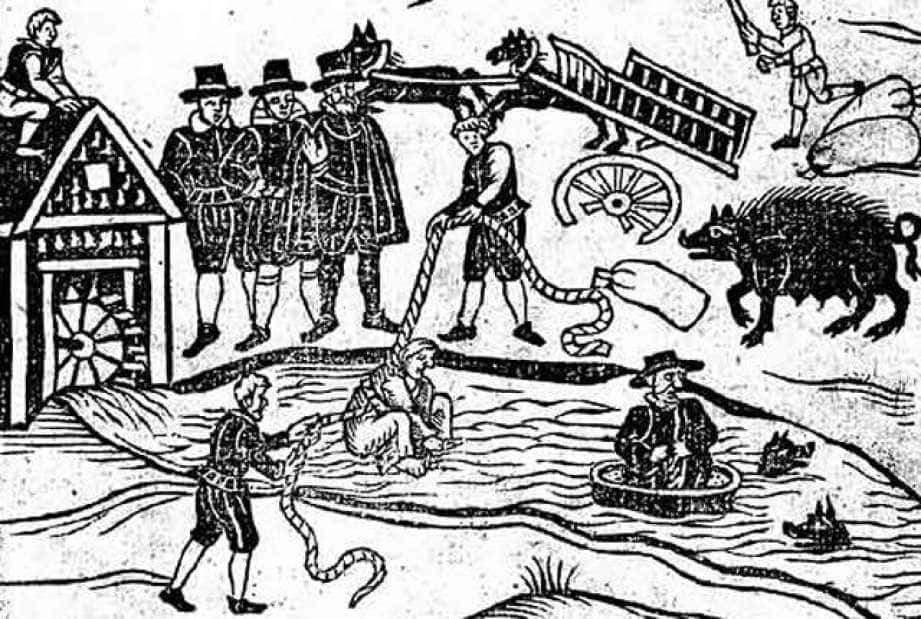
4. I Think I'll Pass, Thanks Though
An Ordeal by Fire forced the defendant to hold a red-hot iron bar while walking three paces. You were found to be innocent if your hands were healed after just three days, but guilty if they weren’t. In the Ordeal by Water you were tied up and thrown in a pond. If you floated, you were guilty and had to face the harsh punishments of the law, but if you drowned, you were innocent, for all the good that did you. Ordeal by Combat is exactly what it sounds like: a noble would battle with their accuser, and the one that was still standing at the end was proven to be right. And if you weren’t victorious, chances were that you were dead or close to it, so there wasn't much need for sentencing beyond that.
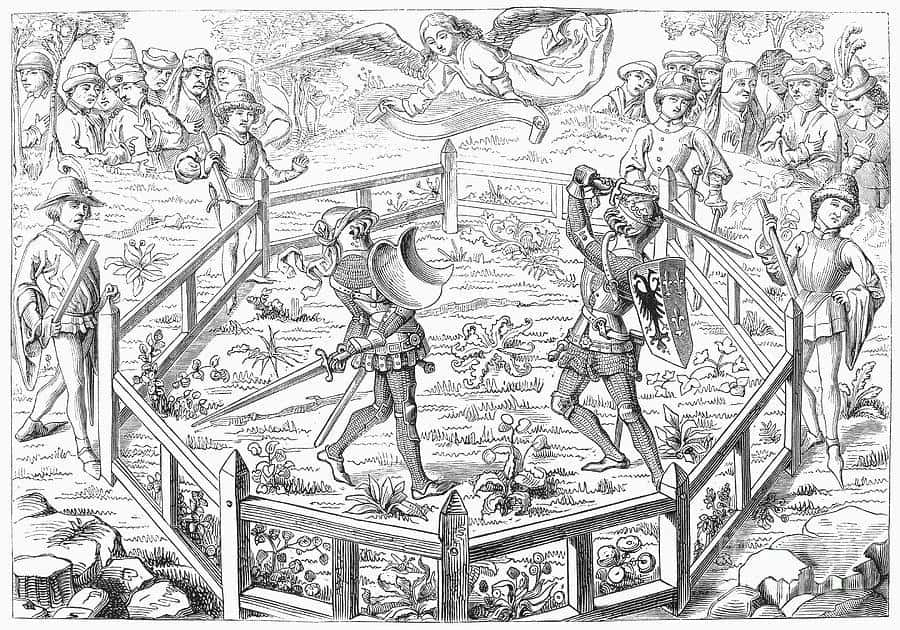
3. Man About Town
If Medieval folk needed a haircut, a tooth pulled, and some surgery, they were in luck, because most of the time their local barber could do all three. The white, red and blue barber's poles still used today harken back to this time: the white, red and blue stripes represent white bandages, red blood, and blue veins (which barbers would frequently open, as bloodletting was by far the most common medical procedure), respectively.

2. Campus War
Nowadays, university students don't tend to be too picky with their beer, but at Oxford in 1355, that wasn't the case. A student complained about the quality of the ale at a local tavern so vehemently that it turned into an all out brawl between the townsfolk and the students. Bar fights were evidently serious business back then, as 30 locals and 60 students were left dead.

1. Ahead by a Century
Long before Nostradamus was alive, there was Roger Bacon. He was a Franciscan friar who liked to make predictions, releasing them in his work, Letter on the Secret Workings of Art and Nature, and on the Vanity of Magic. In it, he claimed “cars can be made so that without animals they will move with unbelievable rapidity,” and “flying machines can be constructed so that a man sits in the midst of the machine revolving some engines by which artificial wings are made to beat the air like a flying bird.” A man ahead of his time, that Bacon.


